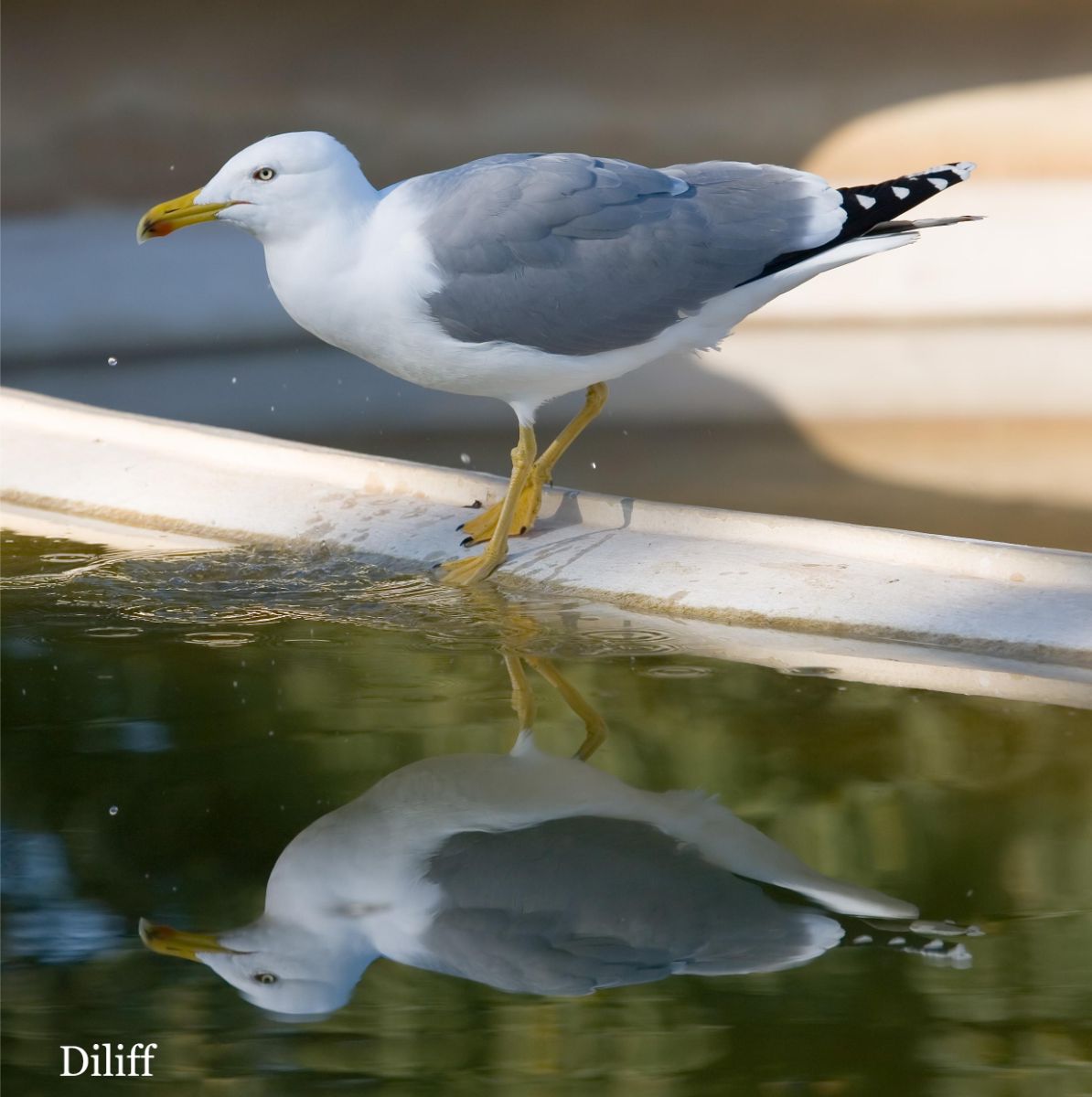Name
Larus michahellis
Yellow-legged gull
Framing
Phylum: Chordata
Subphylum: Vertebrata
Class: Aves
Order: Charadriiformes
Family: Laridae
Genus: Larus
Species: michahellis
Habitat
Beaches, sea cliffs and coastal areas in general, although it also frequents inland areas, especially near rubbish dumps. It is very frequent in the vicinity of coastal population centres, where it can breed successfully in human buildings.
Feeding
Free. Gregarious. Predators of fish and marine invertebrates, although like other large gulls, they often engage in kleptoparasitism, nest predation, scavenging and scavenging, where they may also prey on rodents and other small terrestrial animals.
Distribution
Western and southern Europe and north-west Africa. In Spain it is distributed along the entire coastal strip. Since the middle of the last century it has been colonising the Atlantic coasts of France, the English Channel and central Europe.
Conservation status
Not threatened
Additional information
Free. Gregarious. Large gull (60 cm) with robust head and bill, grey mantle and white head, belly and tail and the ends of the outermost primaries black with white dots. Legs yellowish-orange rather than pinkish and bill orange with a red dot at the end of the lower mandible. Young of the year have a mottled brown and white plumage, black bill and somewhat pinkish legs, and take four years to reach adult plumage, doing so progressively. Mostly sedentary. Until very recently, this gull was considered a subspecies of the herring gull, with which, morphologically, it shows few differences, some of which are not very evident.
Additional information
Bibliography
- BirdLife International (2012). «Larus michahellis». Lista Roja de especies amenazadas de la UICN 2012.2.
- Galarza, A., Herrero, A., Domínguez, J.M., Aldalur, A. & Arizaga, J. (2012). Movements of Mediterranean Yellow-legged Gulls Larus michahellis to the Bay of Biscay. Ringing & Migration, 27:1, 26-31. DOI: 10.1080/03078698.2012.691060
- Lucas, A., Morales, J. & Velando, A. (2014). Differential effects of specific carotenoids on oxidative damage and immune response of gull chicks. Journal of Experimental Biology 217 (8), 1253-1262.
- Ramos, R., Ramirez, F., Sanpera, C., Jover, L. & Ruiz, X. (2009). Feeding ecology of yellow-legged gulls Larus michahellis in the western Mediterranean: a comparative assessment using conventional and isotopic methods. Marine Ecology Progress Series 377, 289-297.
- Vidal, E., Medail, F. & Tatoni, T. (1998). Is the yellow-legged gull a superabundantbird species in the Mediterranean? Impact on fauna and flora, conservation measuresand research priorities. Biodiversity and Conservation 7, 1013–1026. https://doi.org/10.1023/A:1008805030578



